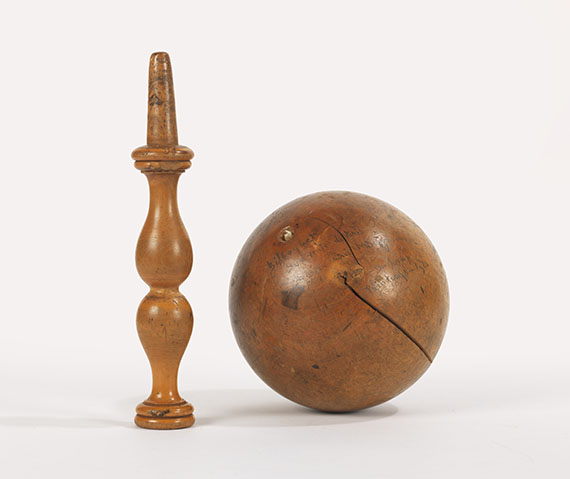Dictionary


Surrealism in Belgium
After André Breton had released his first "Surrealist Manifesto", a group of surrealists formed in Belgium, in Brussels, to be a bit more specific. Belgium's proximity to France was the reason for its susceptibility to innovations from Paris, in the case of Surrealism the neighboring position also played a decisive role and had a fruitful effect. Indeed, Surrealism began to develop in Belgium as early as of 1924 and thus almost at the same time as in France, however, it was not so much based on an examination of Dadaism, which did not have a strong base in Belgium.
The group of Belgian surrealists was founded by three poets, Paul Nougé, Camille Goemans and Marcel Lecomte in 1924. The poet Louis Scutenaire, the musician André Souris and as of 1938 the poet, painter and photographer Marcel Mariën were also members of the Belgian surrealists. In 1926 René Magritte and E. L. T. Mesens joined the group. E. L. T. (Edouard Léon Théodore) Mesens (1903-71), painter and writer, had begun experimenting with collages and photomontages around 1924 and is regarded, along with his friend René Magritte (1898-1967), one of the founding fathers of Belgian Surrealism; his gallery was also the place where the first exhibitions of Belgian surrealists were organized. Both artists had already started a short-lived dadaist magazine as early as in 1925, which was followed by the surrealist magazine "Marie" in 1926. Numerous publications and group exhibitions evolved from the surroundings of the Belgian surrealists up into the early 1950s.
Without any doubt, René Magritte is the main protagonist of Belgian Surrealism, his intellectually refined play on words and images are the highlights of the movement. The Belgian lived in Paris from 1927 to 1930, where he was also in touch with the Breton group. The versatile Marcel Mariën and E. L. T. Mesens, Surrealists from the start on, were Magritte's companions; Paul Delvaux (1897-1994) created his main works in the 1930s. Other important artists of Belgian Surrealism wothwhile mentioning are Raoul Ubac, Jane Graverol, Rachel Baes, Marc Eemans and Armand Simon.
After André Breton had released his first "Surrealist Manifesto", a group of surrealists formed in Belgium, in Brussels, to be a bit more specific. Belgium's proximity to France was the reason for its susceptibility to innovations from Paris, in the case of Surrealism the neighboring position also played a decisive role and had a fruitful effect. Indeed, Surrealism began to develop in Belgium as early as of 1924 and thus almost at the same time as in France, however, it was not so much based on an examination of Dadaism, which did not have a strong base in Belgium.
The group of Belgian surrealists was founded by three poets, Paul Nougé, Camille Goemans and Marcel Lecomte in 1924. The poet Louis Scutenaire, the musician André Souris and as of 1938 the poet, painter and photographer Marcel Mariën were also members of the Belgian surrealists. In 1926 René Magritte and E. L. T. Mesens joined the group. E. L. T. (Edouard Léon Théodore) Mesens (1903-71), painter and writer, had begun experimenting with collages and photomontages around 1924 and is regarded, along with his friend René Magritte (1898-1967), one of the founding fathers of Belgian Surrealism; his gallery was also the place where the first exhibitions of Belgian surrealists were organized. Both artists had already started a short-lived dadaist magazine as early as in 1925, which was followed by the surrealist magazine "Marie" in 1926. Numerous publications and group exhibitions evolved from the surroundings of the Belgian surrealists up into the early 1950s.
Without any doubt, René Magritte is the main protagonist of Belgian Surrealism, his intellectually refined play on words and images are the highlights of the movement. The Belgian lived in Paris from 1927 to 1930, where he was also in touch with the Breton group. The versatile Marcel Mariën and E. L. T. Mesens, Surrealists from the start on, were Magritte's companions; Paul Delvaux (1897-1994) created his main works in the 1930s. Other important artists of Belgian Surrealism wothwhile mentioning are Raoul Ubac, Jane Graverol, Rachel Baes, Marc Eemans and Armand Simon.
Offers for Surrealism
Headquarters
Joseph-Wild-Str. 18
81829 Munich
Phone: +49 89 55 244-0
Fax: +49 89 55 244-177
info@kettererkunst.de
Louisa von Saucken / Undine Schleifer
Holstenwall 5
20355 Hamburg
Phone: +49 40 37 49 61-0
Fax: +49 40 37 49 61-66
infohamburg@kettererkunst.de
Dr. Simone Wiechers / Nane Schlage
Fasanenstr. 70
10719 Berlin
Phone: +49 30 88 67 53-63
Fax: +49 30 88 67 56-43
infoberlin@kettererkunst.de
Cordula Lichtenberg
Gertrudenstraße 24-28
50667 Cologne
Phone: +49 221 510 908-15
infokoeln@kettererkunst.de
Hessen
Rhineland-Palatinate
Miriam Heß
Phone: +49 62 21 58 80-038
Fax: +49 62 21 58 80-595
infoheidelberg@kettererkunst.de
We will inform you in time.




